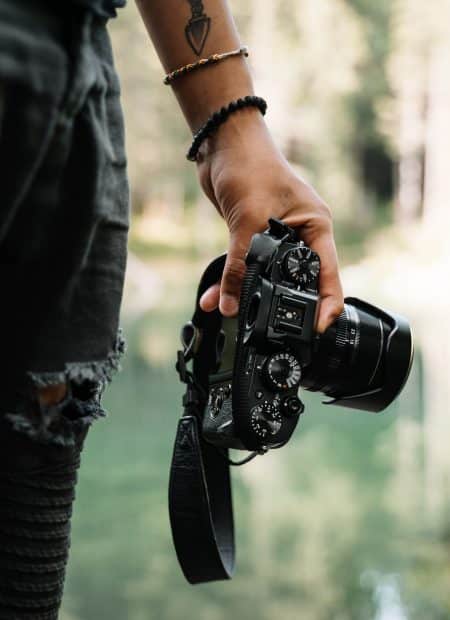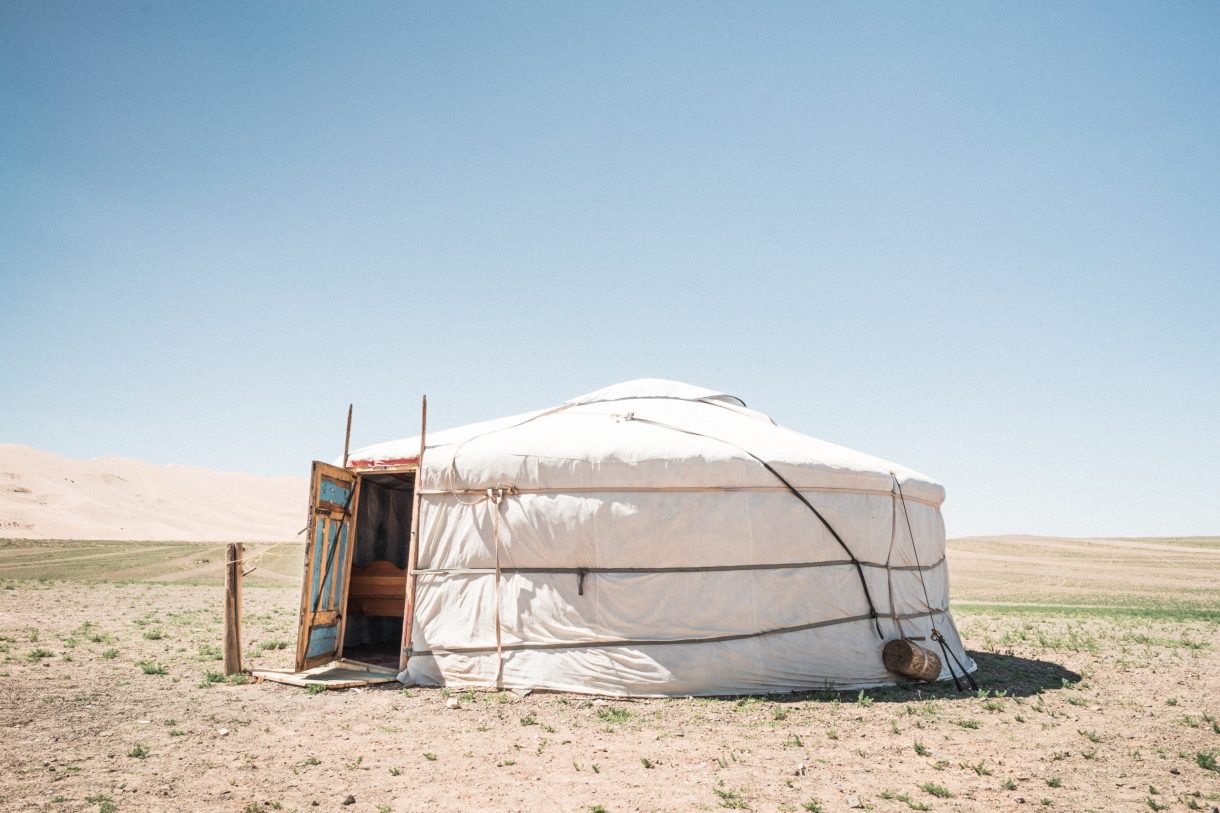
Mongolia: the BEST six-day itinerary [updated 2023]
We are hoping this Mongolia six-day itinerary will inspire YOU to put Mongolia on your bucket list, before the masses discover its appeal and it becomes flooded with tourists!
Having existed in a Soviet bubble for most of the 20th Century, Mongolia is late to the tourism industry party. But don’t let that put you off! Rugged Mongolia is an epic adventure destination where travellers can experience nomadic culture and vast, untouched landscapes.
Sandwiched between Russia and China, Mongolia has the lowest population density of any country in the world. It is this vast emptiness that is the country’s enduring appeal. Apart from the lack of people, Mongolia really does have it all; vast steppes, rugged mountains, clear lakes and abundant wildlife. This untouched country brings travellers into a close communion with nature and the nomadic people.
Amidst the tranquility of Mongolia’s empty landscapes, you can indulge in outdoor adventures, from camel riding in the desert, to stargazing under the world’s clearest night skies. The country’s cultural festivals, like Naadam, offer vibrant spectacles, while its unique cuisine tantalises the taste buds. ongolia, with its sense of peaceful serenity and authentic charm, promises intrepid explorers a travel experience like no other, where every moment is a brushstroke painting an unforgettable adventure.
WHY VISIT MONGOLIA?
Let me paint you a picture…
You wake up in a round canvas tent, a Mongolian ger. Your host has added more wood to the fire so the ger is toasty warm. You stretch, before unfastening the tent to reveal the morning sky, splashed with pinks and oranges as the sun begins to rise. The only evidence of human activity in the valley is a pair of horses parked next to a fence, and the smoke rising from round, white tents similar to yours in the distance.
Your hosts greet you with a hot cup of traditional milk tea and a bowl of steaming rice pudding. You have to decide how to spend your day. Will you go horseback riding across the steppe? Perhaps you’d like to help your hosts prepare lunch, learning how to create traditional Mongolian dishes. Or maybe you’d like to unwind, as you close your eyes and relax in a natural hot spring.
This is a typical day in Mongolia. The country beckons, with its untamed wilderness, a canvas of vast steppes, towering mountains, and the mystical Gobi Desert. Beyond its breathtaking landscapes, Mongolia reveals a unique nomadic culture, where traditions are woven into everyday life, offering a glimpse into a way of living that has endured for centuries. If you visit, you’ll find yourself welcomed into the homes of nomadic families, embracing their warm hospitality.
HOW TO PLAN A TRIP TO MONGOLIA?
Mongolia is huge. It’s seriously big. Travellers underestimate its size, because of its location between two of the World’s largest countries: Russia and China.
Anyone planning a trip to Mongolia should be aware of just how big it is. If you want to see the whole country, you will need months. This means that you should be reasonable, understand what you have the time for, and plan accordingly.
Here are our recommendations:
- If you’re short on time: stick to Central Mongolia. You’ll probably arrive into Ulaanbaatar, and Central Mongolia is perfectly situated to give you a small taster of all the regions of Mongolia.
- If you’ve got a couple of weeks: plan a road trip around Central and Southern Mongolia. Two to three weeks is the perfect amount of time to explore the Mongolian steppe before heading South to the Gobi Desert.
- If you’ve got a month or more: start with Central Mongolia, before looping around to take in Southern Mongolia and Eastern Mongolia, one of the region’s least-visited areas!
Mongolia is really hard to visit without being on a tour. This is partly because there’s no infrastructure! There are barely any roads, there’s no signage, no one speaks a shred of English, and if you want to get to the exciting places you’ll be off-roading half the time.
By joining a tour, you get a guide who knows what he’s talking about, and a driver who can magically navigate the terrain to get you where you need to be. Seriously, it’s like these guys have a built-in GPS in their heads or something! They’re seriously amazing at navigating!
WHAT TO EXPECT DURING YOUR TOUR OF THE MONGOLIAN STEPPE
Although we are usually do-it-yourself travellers, renting a car in Mongolia did not appear to be the best option. Most roads are unmarked dirt roads and driving is heavily ‘off road’. There are no good up-to-date maps, very few road signs, and satellite service is patchy.
With an area of 1.6 million km², the 8 days we had allocated were barely enough to scratch the surface. To make the most of our time in Mongolia, we booked onto a private tour.
DAY 1: LITTLE GOBI
Rolling out of Ulaanbaatar in a Jeep, we made our first stop to pick up supplies for the next week. It wasn’t long before the city fell away behind us and the vast steppes unfolded. Untouched landscapes sprinkled with tiny gers stretched across the horizon as herds of goats and horses grazed in the fields.
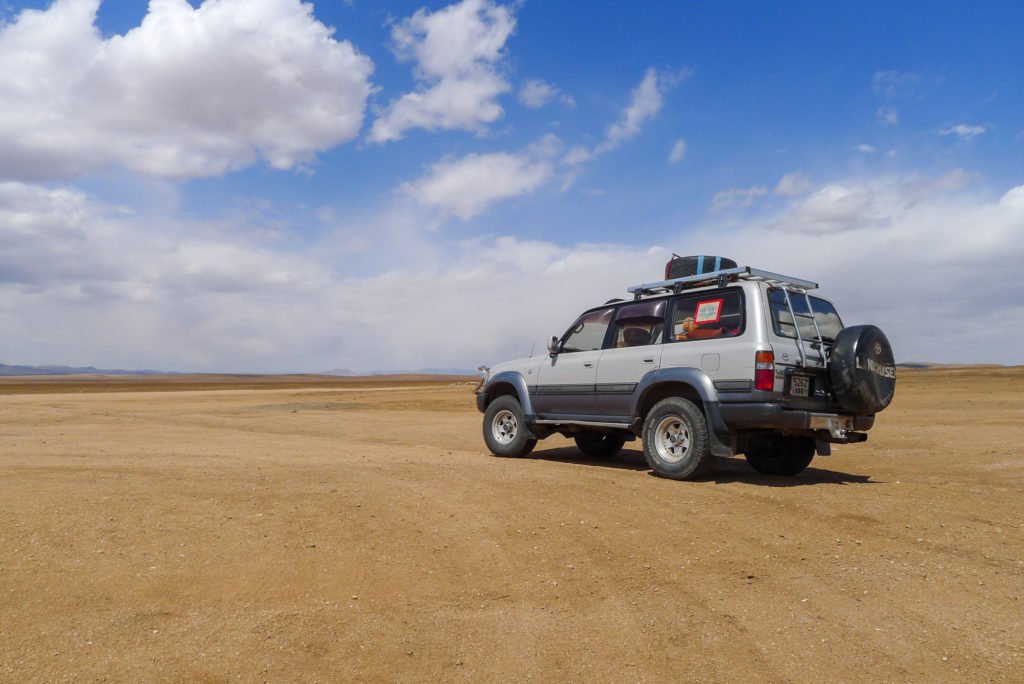
Our Jeep: Ready to tackle the Mongolian ‘roads’
Mongolia isn’t called The Land of Blue Skies for no reason. The sun beams down upon this country approximately 255 days a year. However, we found Mongolian weather is as changeable and unpredictable as our local Scottish weather is known to be.
Driving across the steppe, we experienced all four seasons in a matter of hours. Sun and blue skies turned to dark clouds, rain and a hailstorm as we crossed the sand dunes of Mongol Els, fondly known as ‘Little Gobi’. This is a 100km long, 5km wide strip of land that has a unique combination of Mongolian mountains, forests and Gobi-esque landscapes in one location
A break in the clouds allowed the sun to peek through and we took a walk to a nearby monastery, hiking up into the mountains above to experience the ruins of a second. We’re no strangers to wet-weather walking, so the rain didn’t bother us so much!
We spent the rest of the afternoon exploring the sand dunes, the closest we could come to the Gobi Desert in the short length of time that we had. Of course, passing through the Little Gobi would have been incomplete without a ride on the famous Bactrian Camel, a two-humped camel native to the steppes of Central Asia.
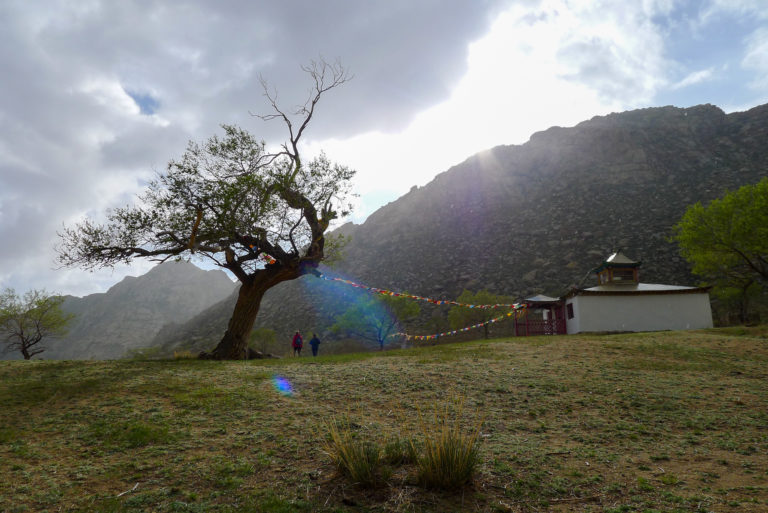
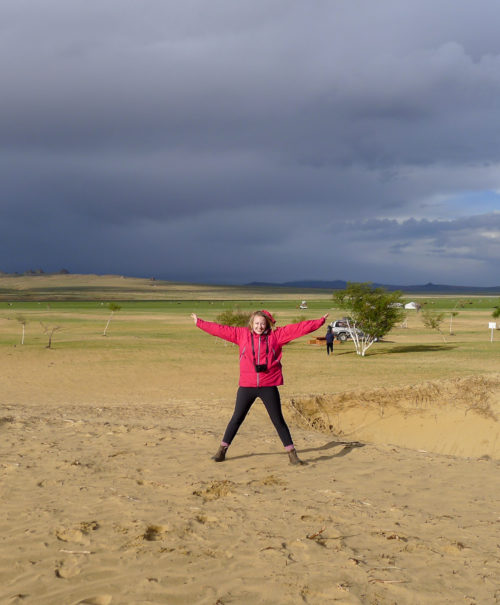
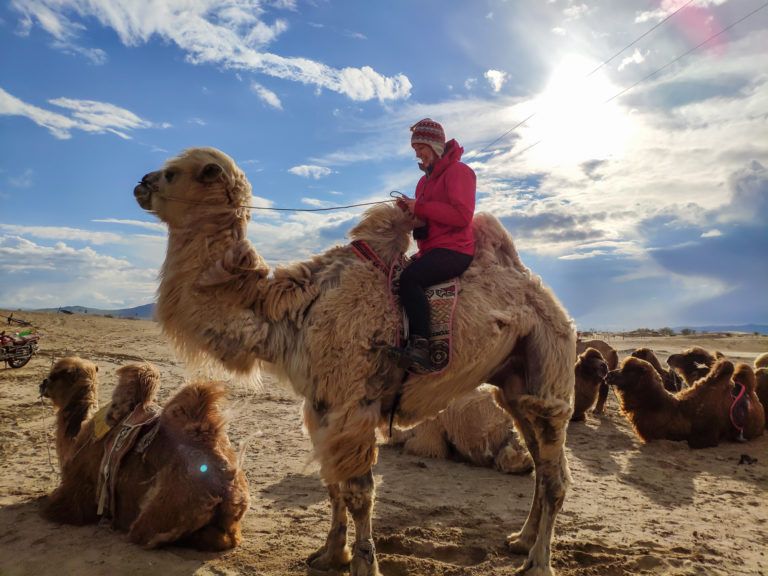
Adventures in all weathers!
DAY 2: KHARKHORIN
Having fallen asleep listening to the soothing whooshes of the wind whipping across the dunes of the Little Gobi, we awoke refreshed and ready for some Mongolian culture.
The Mongolian 13th-century capital, Kharkhorin, is full of history. First stop was Erdene Zuu Khiid, the first Buddhist Monastery in Mongolia. Founded in 1586, at its peak the monastery had between 60 – 100 temples and up to 1000 monks in residence.
The monastery barely survived the Stalinist purges of 1937. Although a shadow of what it once was, thia active monastery is still a wonderful insight into the culture and history of the Mongolian people.
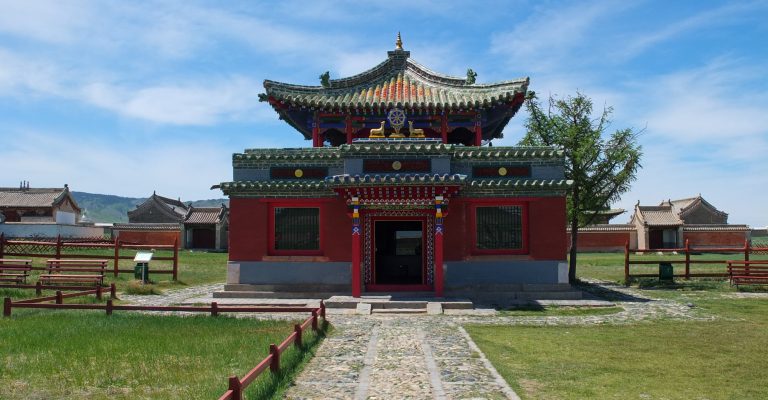
Kharkhorin: Ghenghis Khan’s Capital City
We also stopped off at Kharkhorin’s museum. The exhibit contains artefacts dating from the 13th and 14th centuries which were mostly recovered from the town. Small but highly impressive, the artefacts are beautifully displayed, with pottery, bronzes, coins, religious statues and stone inscriptions in addition to a comprehensive history of the city.
We found it invaluable to have a guide, as many of the artefact descriptions were written in Cyrillic with few English translations.
Fording across two rivers and ‘off-roading’ over several hills, we experienced our first nomadic home stay. Our hosts had prepared a traditional Mongolian tea – a salty, buttery, green tea made with fresh milk from their herd.
We spent the night by a campfire, watching the sun dip below the hills. We shared toasted marshmallows despite not sharing a language, and gazed up at the milky way as occasional shooting stars left bright trails across the sky.
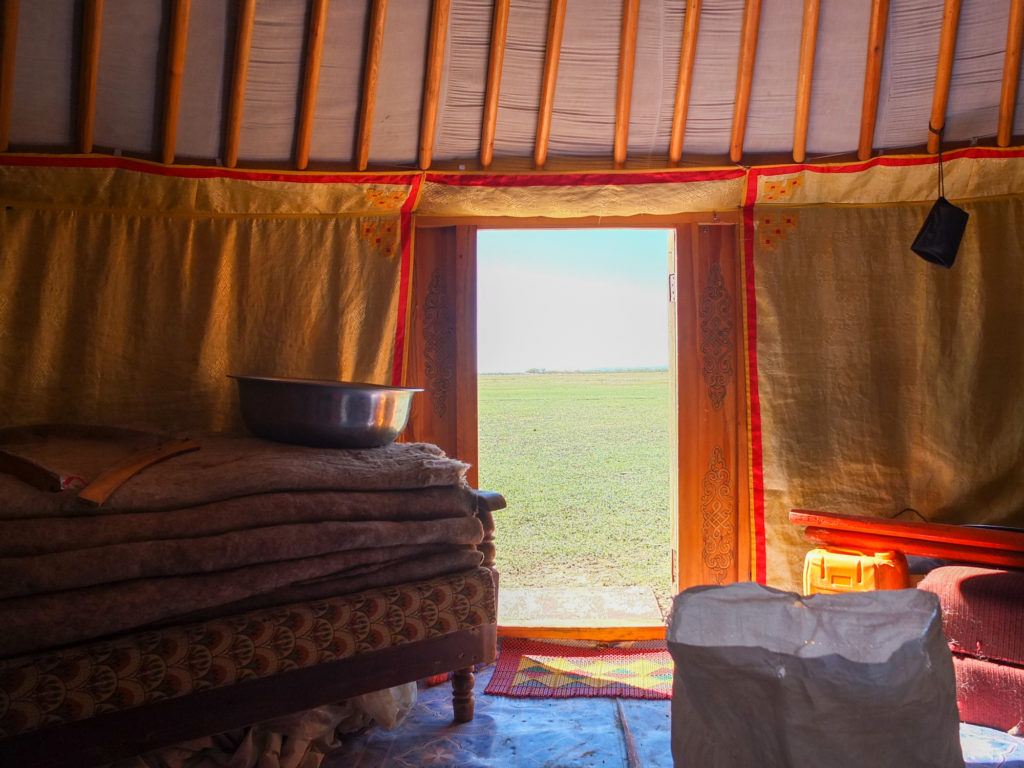
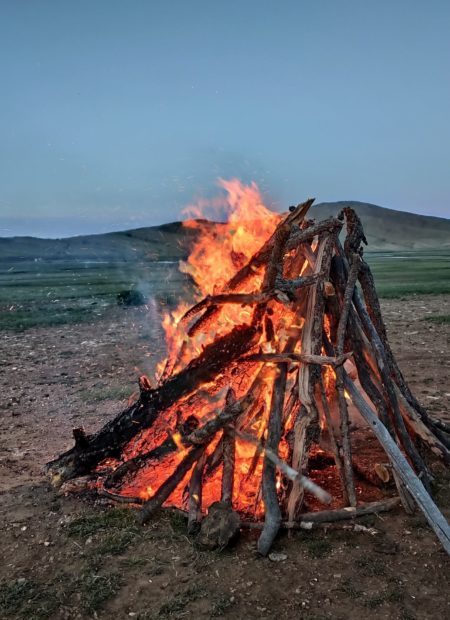
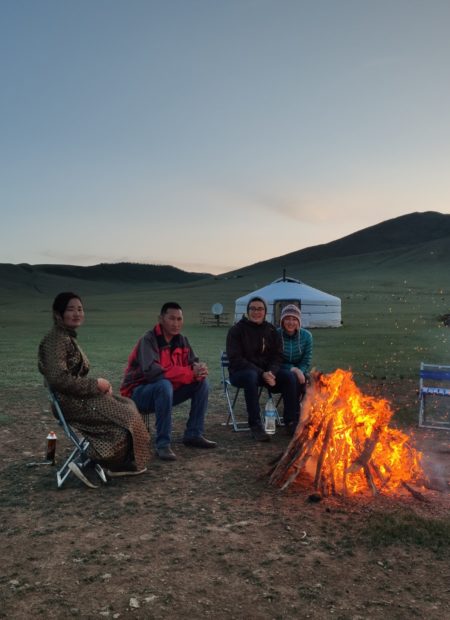
Expect a warm welcome in Mongolia, but don’t expect any of the locals to smile for your photos!
DAY 3: ORKHON VALLEY
We began the day with a visit to the the Kul-Teginii Monument and museum. The museum features large stone inscriptions and artefacts from the 6th-century Göktürk period and an interesting insight to nomadic empires.
A bumpy off-road drive led us to the Orkhon Valley. We drove almost the whole morning without seeing another vehicle, passing through flocks of goats and sheep that scurried out of the way of our Jeep.
Stumbling across a family moving their ger and herds across the fields, we watched in awe as the circular tent was constructed. Eventually we were invited to ‘help’ and rewarded with generous dollops of yak yoghurt sweetened with honey. I don’t think we did any real work!
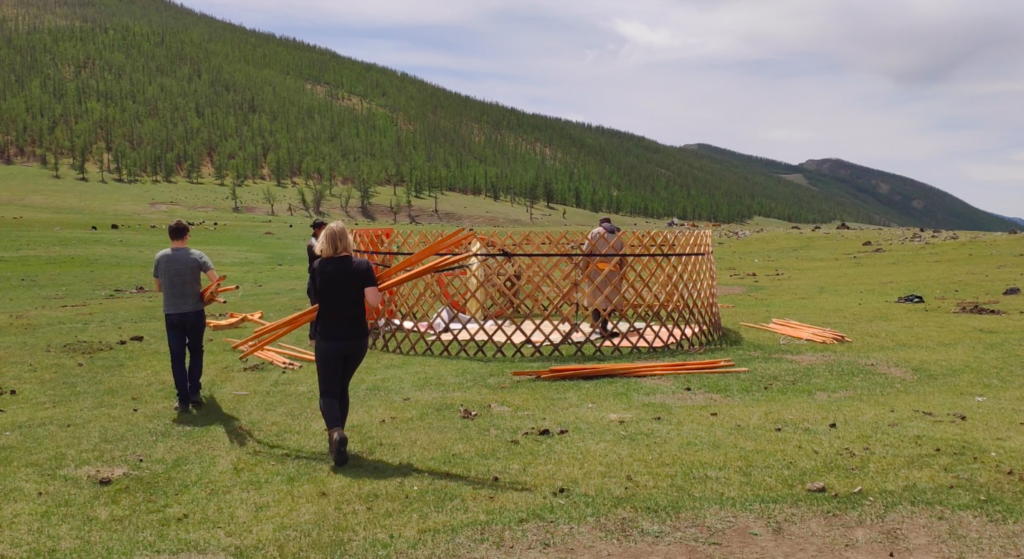
‘Helping’ a family to construct their home for the next few months
We continued off-road until reaching a second nomadic home stay and the first tourists we had seen since leaving Ulaanbaatar. Greeted with a thermos of Mongolian tea, we spent the evening relaxing round a campfire and partaking in some wrestling with our guide and hosts.
Of all the experiences we had in Mongolia, staying in a ger is up at the top. A traditional felt yurt, gers look like simple tents, but we were always surprised by the luxuries they contained. Most gers are fully furnished with a small wood-burning stove in the centre, providing a cosy alternative for accommodation and supporting the nomadic population.

A Mongolian tourist camp we passed, but did not stay at.
DAY 4: HORSEBACK RIDING IN ORKHON VALLEY
Orkhon Valley sprawls along the banks of the Orkhon River in Central Mongolia, some 320 kilometres west from the capital of Ulaanbaatar. Once viewed as an area of strategic and religious importance, it was out of this valley that Ghenggis Khan’s Mongols rode as empires fell beneath the hooves of their horses.
Horses are historically of great importance in Mongolia. Mongolians have been traversing their country on horseback for thousands of years, in fact, the Aduu horse is believed to be largely unchanged since the time of Ghenggis Khan. Half-wild, the horses are left to fend for themselves throughout the year, occasionally being used for milk or meat.
With this knowledge, we embarked upon a day’s ride across the Orkhon Valley to experience the ancient history in the most authentic way possible: horseback.
A particular highlight was Ulaan Tsutgalan waterfall, Mongolia’s biggest. Twenty metres high and ten across, the water cascades into a glistening pool in the volcanic gorge below.
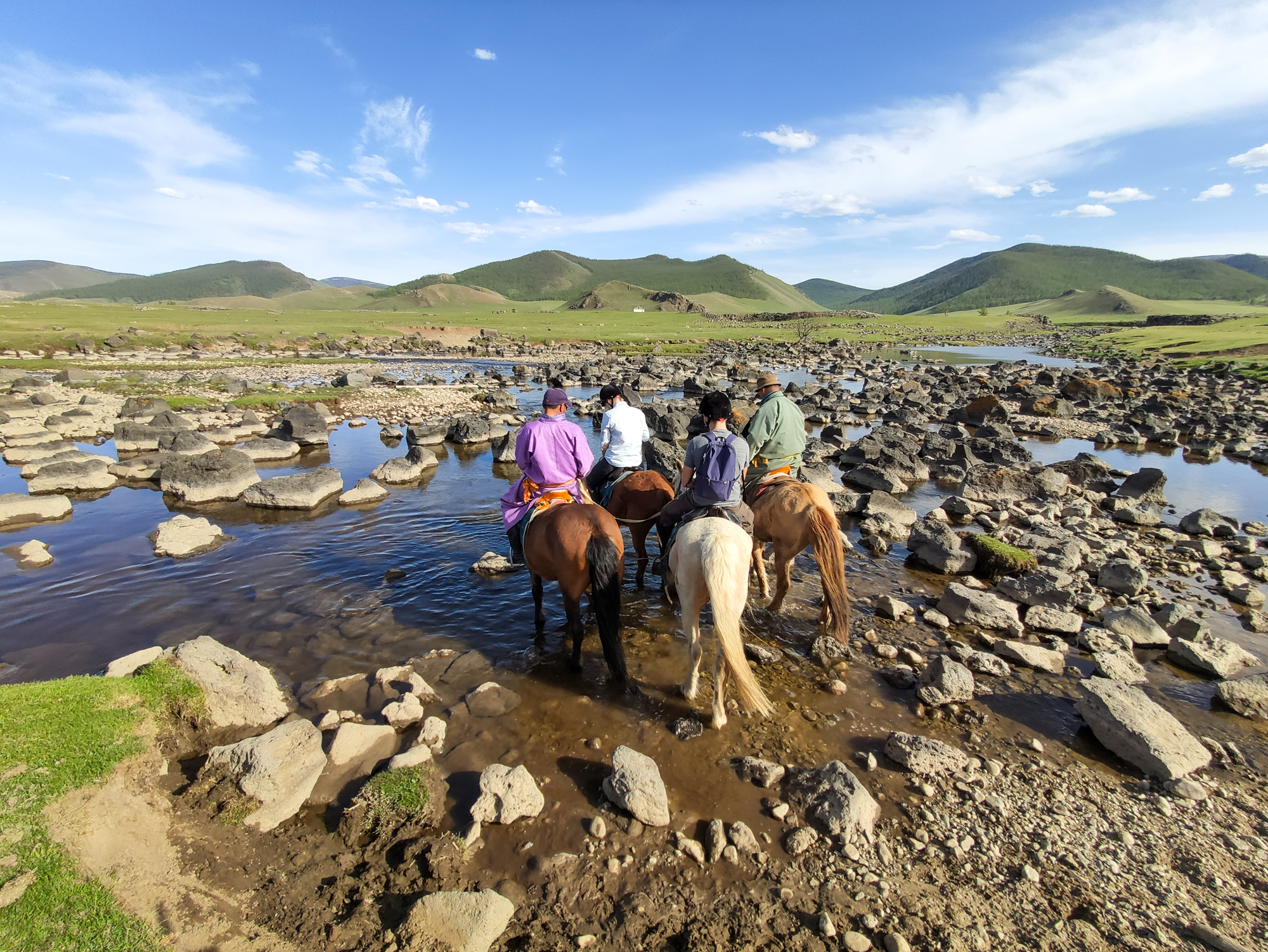

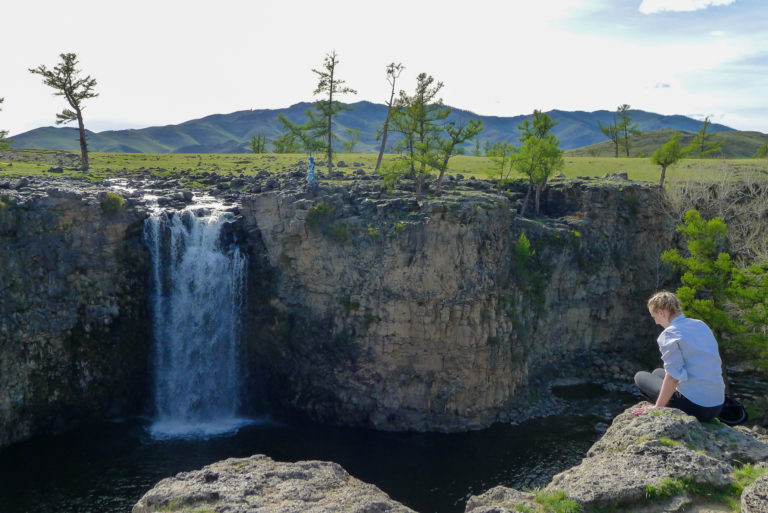
Exploring the Orkhon Valley on horseback
DAY 5: ARKHANGAI HOT SPRINGS
The volcanic activity responsible for creating the gorge into which Ulaan Tsutgalan tumbles is also responsible for the presence of natural hot springs – essential for two adventurers who hadn’t had a proper shower in four days (seriously, bring wet wipes)!
In a verdant wooded area of Arkhangai, this 86°C water gushes from the northern hillside of the Khangai Mountains into stone pools. Popular with travellers and nomads alike, the springs are rumoured to have healing properties. We found this a great place to relax and unwind after hours of bumpy off-road driving.
Wanting to stay away from the tourist ger camps, we pitched our tent on a nearby hillside overlooking the hot springs. Yaks grazed next to our tent as birds of prey circled above us. The view was beautiful.
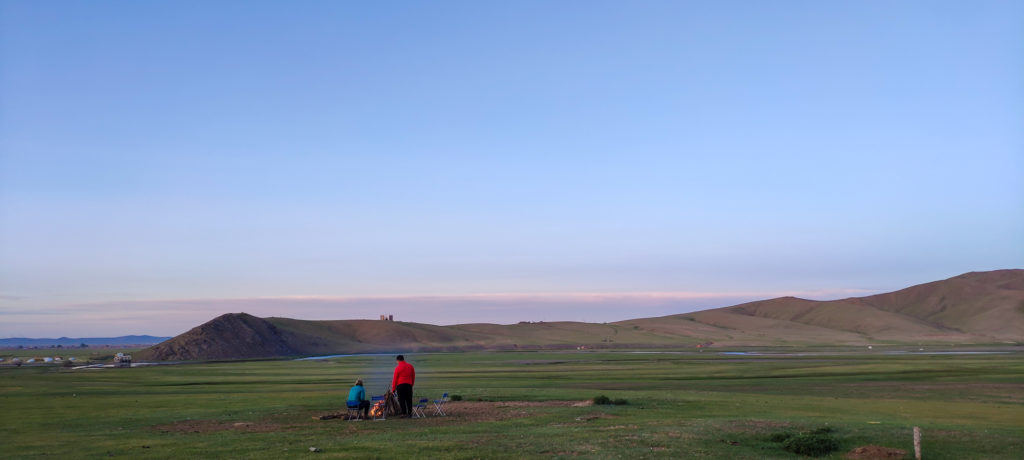
The Arkhangai hot springs are at the foot of this hill
DAY 6: ÖGII NUR
The final day of our Central Mongolia tour was spent by the shores of Ögii Nur, a freshwater lake known for the abundance of wildlife that can be found there.
Out on the lake all was silent. Occasionally, a fish would leap for flies and land with a slapping sound on the surface. The clouds reflected in the silver lake giving it the appearance of a large mirror.
We spent our final evening wild camping, putting up our tents away from any sign of civilisation. Looking across the lake at sunset, beer in hand, it felt like we were alone in this huge, untouched country.

Wild camping at Ögii Nur
MONGOLIA FAQs
Q: IS MONGOLIA TOURIST FRIENDLY?
A: Certainly! Mongolia is generally tourist-friendly, particularly in popular areas and cities like Ulaanbaatar. English is not widely spoken, but locals are known for their hospitality. If you’re planning to leave the city, you should definitely book onto a guided tour. Respecting local customs and learning basic Mongolian phrases will get you far in making friends.
Q: IS MONGOLIA SAFE TO TRAVEL?
A: Yes, Mongolia is known for its low crime rates and friendly locals. However, it’s advisable to travel with reputable tour operators, especially in remote areas, and be prepared for the challenges of the country’s rugged terrain and variable weather conditions.
Q: IS MONGOLIA EXPENSIVE TO TRAVEL?
A: Mongolia is generally considered an affordable travel destination, especially when compared to Western countries. However, as with any country, the cost of travelling in Mongolia can vary based on your travel style and activities. There are plenty of options for all travel budgets, so don’t worry!
Q: IS MONGOLIA EASY TO TRAVEL?
A: Ehhhh… no. But that’s part of the adventure! Mongolia’s remote areas pose challenges due to limited infrastructure and communication. This is where it’s really important to travel with a guide. They can communicate with locals and navigate like pros, ensuring a smoother journey in this rugged and beautiful country.
Q: IS MONGOLIA VEGETARIAN OR VEGAN FRIENDLY?
A: Mongolian Cuisine isn’t famous for being vegetarian or vegan friendly, but options are improving! You’ll find plenty of veggie and vegan options in Ulaanbaatar (we were pleasantly surprised). Outside of the cities, meat-heavy traditional cuisine may pose a problem for vegetarians. Communicate your needs up-front and they should be able to arrange something. We’ve written a guide to being vegan in Mongolia that you might find helpful.
Q: IS MONGOLIA A TOURIST DESTINATION?
A: Yes, Mongolia is off the beaten path, but does have a good tourism industry. Mongolia offers a range of activities, from exploring the Gobi Desert to trekking in the mountains, making it a diverse and captivating destination for tourists.
Q: HOW SAFE IS MONGOLIA FOR FEMALE TRAVELLERS?
A: Mongolia is generally safe for female travellers and I had no issues here. Catcalling and harassment didn’t seem like much of a thing, and the men I met were nothing short of respectful. Yes, shit happens everywhere, but the whole country just gave good vibes.
Follow our daily adventures on Facebook and Instagram
Disclaimer: The information and advice provided in this blog are the author’s opinions and based on their personal experiences. All information was accurate at the time of writing. However, things can change quickly, so always double-check current conditions and guidelines before setting out. Remember, your travels and safety are your own responsibility, and this blog can not be held responsible for anything that might happen on your adventures! Always exercise caution and good judgment. Oh, and don’t forget to get travel insurance! Happy travels!
This post may contain affiliate links (yay for transparency!) This means that I will earn a small commission, at no additional cost to you, if you click the link and choose to buy the product. I only link to stuff I have personally bought and found useful and never endorse crap. Your support helps keep the site going, thank you!
Alice
Alice is a UK travel blogger who advocates sustainable travel and being more eco-conscious on a budget. She loves coffee, her houseplants and summiting mountains.
You May Also Like

The Essential Guide to Mongolian Ger Etiquette [Updated 2023]
June 13, 2020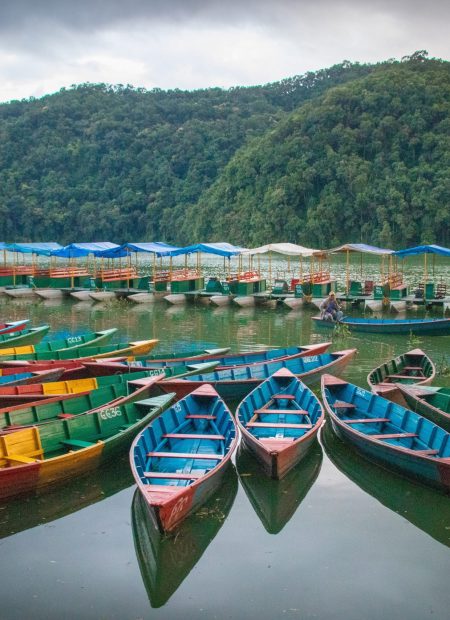
The Ultimate Pokhara Green City Guide for Eco-Travellers [2023]
March 22, 2023